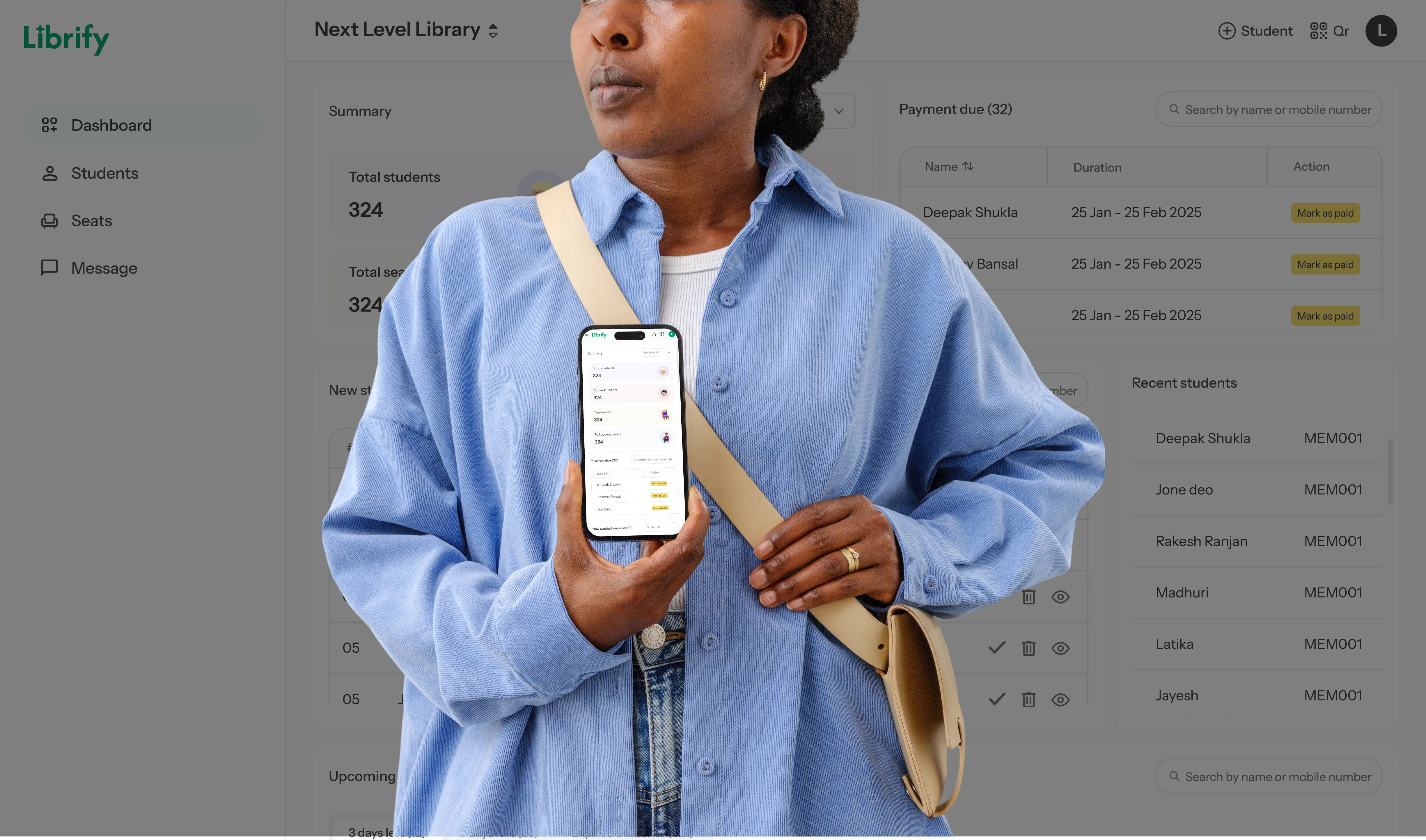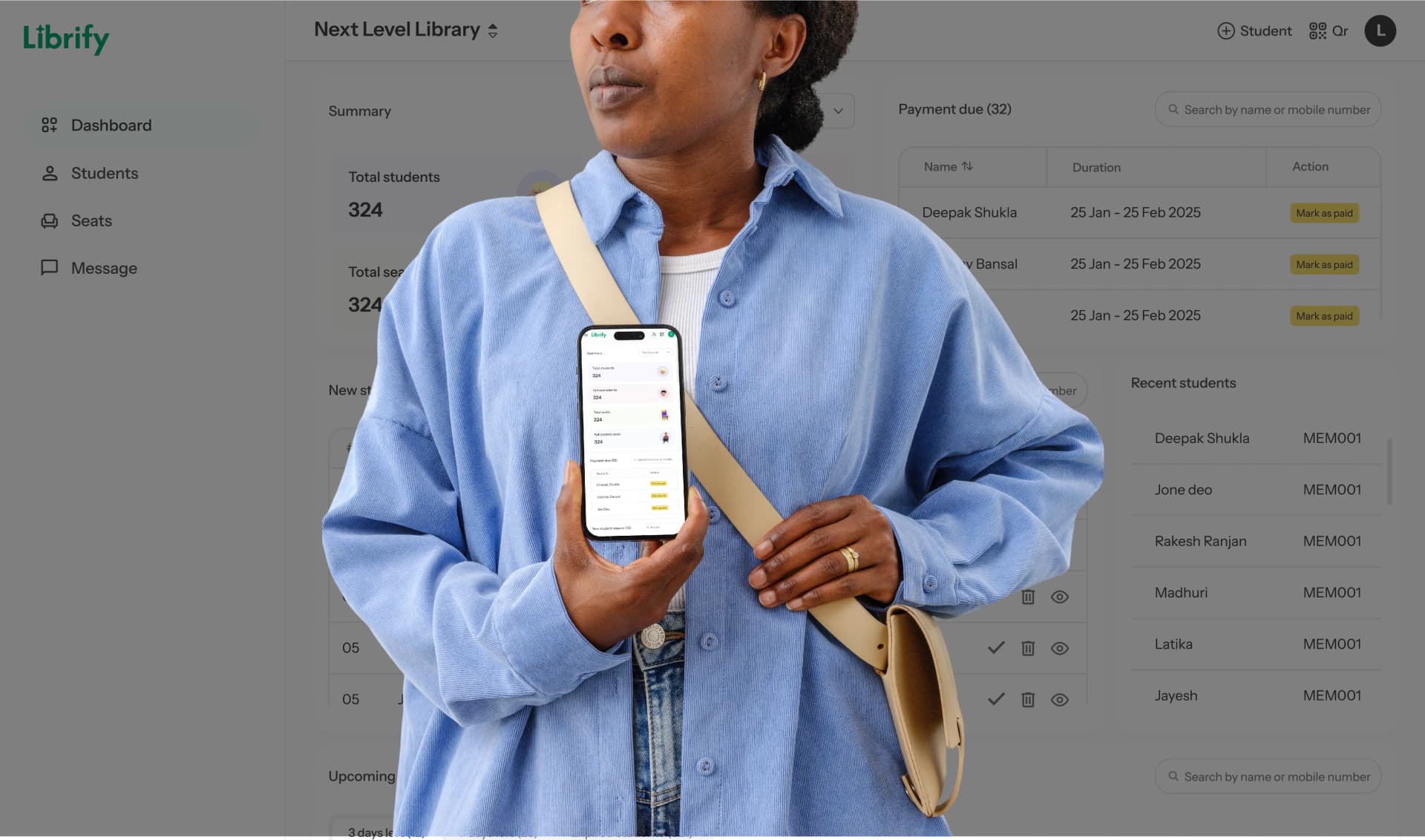The Evolution of Library Spaces in the Digital Age
Libraries have transformed from traditional book repositories to dynamic study spaces where students and professionals seek quiet environments for focused learning. Managing these spaces effectively requires more than just a sign-in sheet and a watchful librarian. This is where specialized library management applications come into play, revolutionizing how these vital learning hubs operate.
Modern library management software like Librify offers comprehensive solutions for study space management, helping administrators optimize seating capacity while providing students with convenient booking options and an enhanced study experience.

Key Benefits of Advanced Library Management Applications
Optimized Space Utilization
Maximize your library's seating capacity through intelligent space management. Track usage patterns and identify opportunities to accommodate more students during peak hours.
Streamlined Operations
Automate routine tasks like seat assignments, check-ins, and time monitoring. Free up your staff to focus on providing value-added services rather than administrative paperwork.
Enhanced User Experience
Provide students with the convenience of mobile booking, real-time seat availability, and personalized study space preferences, leading to higher satisfaction and retention.
Data-Driven Insights
Access powerful analytics on usage patterns, peak hours, and student preferences, enabling informed decisions about space allocation, opening hours, and resource distribution.
Essential Features of Modern Library Management Applications
When selecting a library management solution for your study space, look for these critical features that enhance both administrative efficiency and student experience:
-
Advanced Seat Reservation System
Look for flexible booking options including mobile reservations, time slot selection, and seat preferences based on location, amenities, or quiet zones.
-
QR-Based Check-In/Check-Out
Streamline the entry process with QR code scanning that automatically tracks attendance, monitors time limits, and releases seats when users depart.
-
Real-Time Occupancy Monitoring
Access live dashboards showing current library usage, heat maps of popular areas, and historical patterns to optimize space management.
-
Membership Management
Manage digital memberships, subscription renewals, and tiered access levels for different user categories with automated notifications and reminders.
-
Comprehensive Analytics
Generate detailed reports on usage trends, user demographics, and resource utilization to guide strategic decisions and resource allocation.
Implementing a Library Management Solution: Step by Step
Successfully transitioning to a digital library management system like Librify requires careful planning and execution. Follow these steps for optimal results:
Assess Your Library's Needs
Evaluate your current operations, identify pain points, and establish clear objectives for your new management system. Consider factors like space capacity, user demographics, and peak usage periods.
Choose the Right Solution
Compare available options like Librify based on your specific requirements, budget constraints, and technical capabilities. Consider cloud-based versus self-hosted solutions.
Prepare Your Infrastructure
Ensure you have the necessary hardware (QR scanners, display screens, mobile devices) and network capabilities (reliable WiFi throughout your space) to support the new system.
Train Your Staff
Conduct comprehensive training sessions to ensure your team is comfortable with the new system. Address concerns, collect feedback, and designate system champions who can assist others.
Implement a Phased Rollout
Begin with a pilot program in a specific section of your library before full implementation. Gather user feedback, address issues, and refine processes before scaling up to your entire facility.
Case Study: Central Library Transformation
The Central Library faced significant challenges with their study space management:
- Long queues during exam periods created frustration
- Popular study areas were consistently overcrowded
- Staff spent hours on manual check-ins and seat assignments
- No data was available to guide space optimization decisions
After implementing Librify 's management solution, they experienced:
"The data from our library management system revealed usage patterns we never would have discovered otherwise. We've been able to redesign our spaces to better serve student needs and optimize our staffing accordingly." - Library Owner
The Future of Library Management Technology
As technology continues to evolve, library management applications are incorporating cutting-edge features to further enhance user experience and operational efficiency:
AI-Powered Space Optimization
Machine learning algorithms will analyze historical usage data to dynamically adjust seat layouts, predict peak times, and suggest optimal seating arrangements based on user preferences.
IoT Integration
Smart sensors will monitor environmental conditions like noise levels, temperature, and lighting, automatically adjusting settings or alerting staff to maintain optimal study conditions.
Collaborative Features
Enhanced group booking capabilities will allow students to reserve study pods, coordinate group sessions, and share resources seamlessly through integrated communication tools.
Transform Your Library Experience Today
Modern library management applications have revolutionized how study spaces operate, creating more efficient environments for administrators and more productive experiences for students.
- Eliminate manual processes and administrative burden
- Provide students with convenient digital booking options
- Maximize your space utilization through data-driven insights
- Create a modern, tech-enabled study environment that meets today's student expectations
The future of library management is digital, intelligent, and user-centric. Is your library ready to make the transition?


